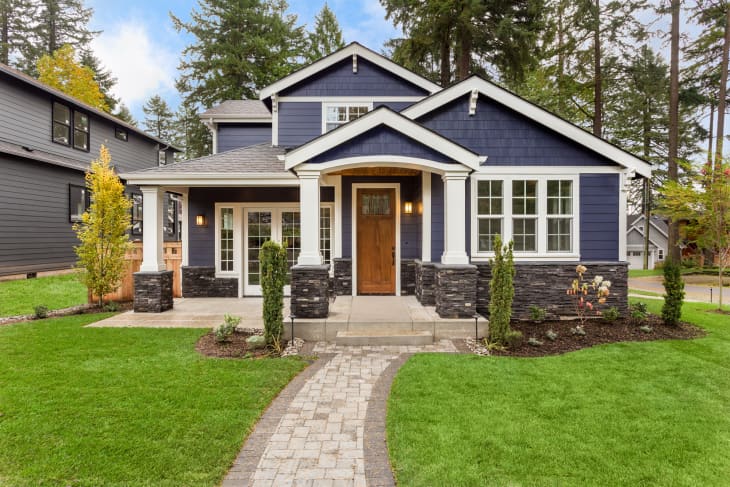What Is Included in the Square Footage of a House?

When you look at a real estate listing, its square footage is one number you’ll likely want to pay attention to. Square footage is an indicator of the overall size of the home, and can tell you whether it will have enough space for your needs. It can also affect the value of a home. A home’s square footage is a great place to start to determine both how much space you need, as well as how much house you can afford.
Wondering what a “typical” home size is? Despite the rise of the tiny house trend, in the United States, the average square footage of a home has been steadily increasing for decades. In 1973, the median new single-family house was 1,525 square feet. By 2010, it clocked in at 2,169 square feet. In 2018, the average was at 2,435 square feet, a 60 percent increase since 1973. Of course, the “average” size of a home will depend on your market. So, too, will the square footage you can get for your buck.
When it comes to apartments, averages are a bit different. Is your rental “small”? There doesn’t seem to be a huge consensus, and answers will vary on where you live. In 2016, a New Yorker was renting a 40-square foot, windowless abode for $450 per month. That’s quite a bit smaller than the national average size of an apartment of 889 square feet, determined by RentCafe from 2016 data.
How do you measure the square footage of a house?
To measure your home’s square footage, first, sketch a floor plan of the interior, remembering to include rooms like hallways. Then, measure the length and width of each room, multiplying the two numbers. Mark down the totals in your sketch. Once you’ve determined a number for each room, you can add up the individual measurements for the total square footage of the entire house.
If you have some irregularly-shaped rooms or spaces, try a calculator like this one that can help with spaces that are triangles, polygons and other more unusual shapes.
What is considered livable square footage?
To accurately gauge whether a certain amount of square footage will work for you, you must ensure that you’re measuring it correctly and consistently. Most commonly, square footage refers to gross living area (GLA), which only includes those spaces in the home which can actually be “lived” in. For example, an unfinished basement and a garage would not be included in a GLA measurement.
Another common standard is to include all space that uses the same heating and cooling system in the home. Typically, this will include bathrooms, even though you may not spend a lot of time “living” in yours. Stairways and closets will usually be included in the square footage length.
When it comes to porches and other outdoor spaces, they’re usually only included if they use the same heating system as the rest of the house. Pool houses, guest rooms, sheds, and other ancillary spaces that require leaving the main house to access them are treated like garages and are not usually included.
Just because a space is not included in a home’s square footage, though, doesn’t mean it’s not valuable, so take that wraparound deck into account when you’re assessing the price of a home.
Different standards for measuring square footage
Ultimately, the square footage number you come up with depends on what criteria you’re using. For example, the National American Standards Institute (ANSI) calculates square footage for detached single-family homes by the sum of finished square footage of each level.
For attached single-family homes, square footage equals the sum of the finished areas on each level, measured to the outside wall or from the centerlines between buildings. They also provide specific guidelines on measuring finished areas adjacent to unfinished areas, openings to the floor below, above- and below-grade finished areas, garages, and more.
Multiple Service Listings (MLS) also reports on a home’s primary livable, permitted square footage. It does not include garages, other buildings or unpermitted structures on the property.
Hire a professional to measure square footage
If all that sounds a little complicated for you, hiring a professional to do the measurements for you might be your best bet. You can hire an appraiser to give you an official, accurate square footage measurement for about $150. This will safeguard you against any errors, which could result in major headaches. For example, if you list your home with an inaccurate square footage measurement, which is discovered during the buying process, the offer may fall through.
While you may be tempted to rely on tax documents, this would be a mistake. That’s because they’re typically based on builders’ plans, which can undergo major changes in the process of building.
When in doubt, you can always take your own measurements to compare to a professional’s. If there are major discrepancies, ask them to walk you through the inconsistencies.